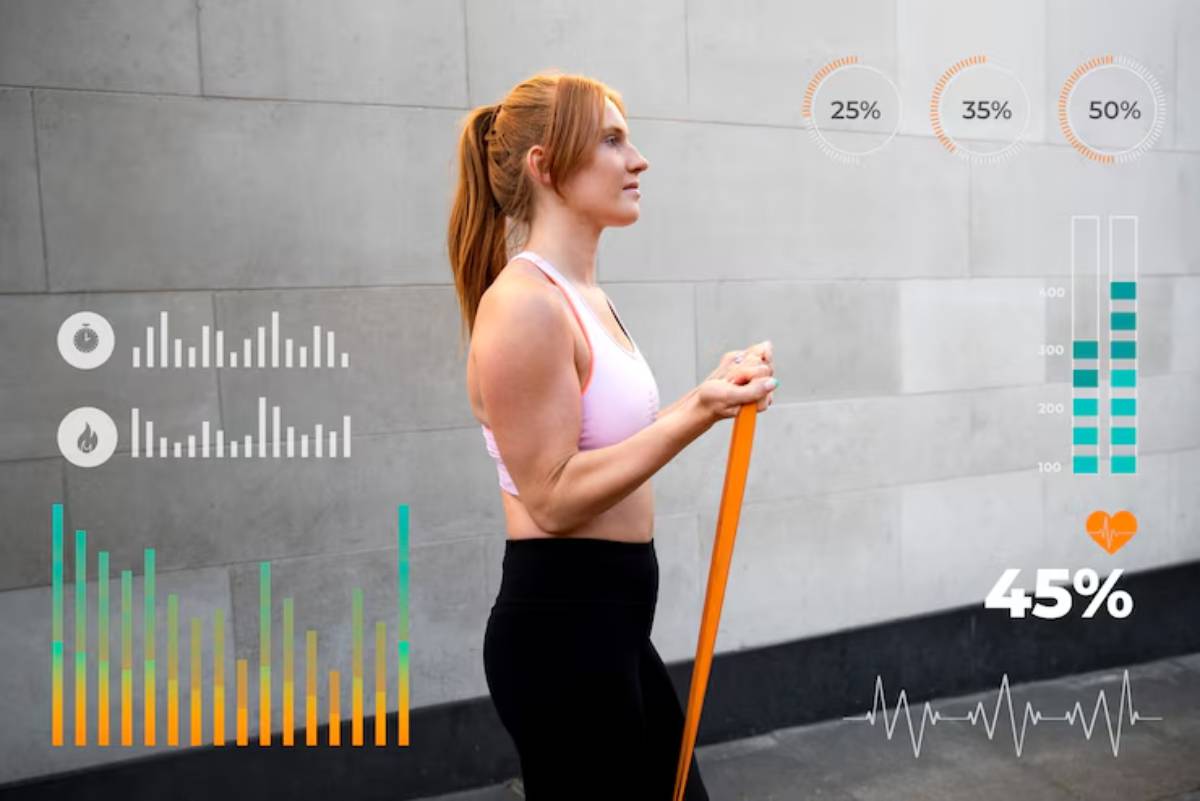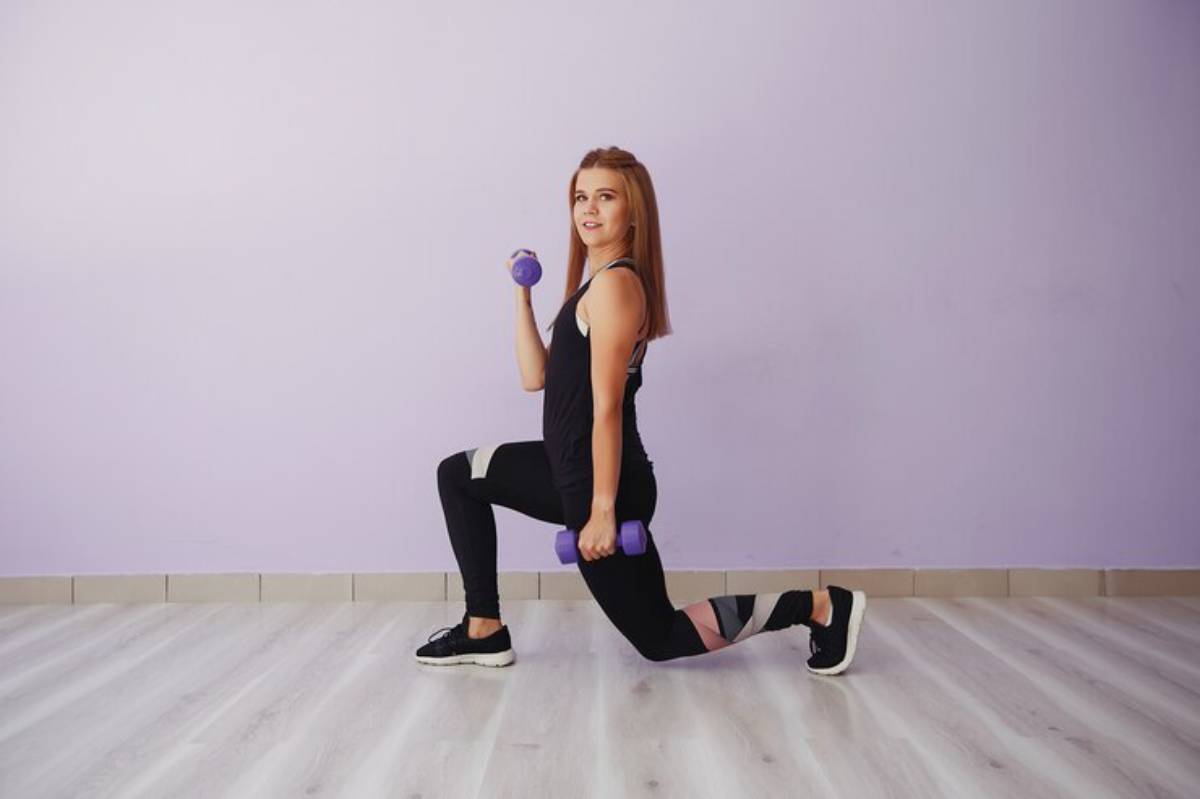
Weight Training for Fat Loss Without Cardio
When you think of fat loss, what’s the first thing that comes to mind? Treadmills. Spin classes. Endless HIIT sessions. The idea that cardio is the only way to burn fat has been drilled into fitness culture for decades,
especially for women. But here’s the truth: you can absolutely lose fat through weight training alone.
And not only that — it might even be a better, more sustainable option for many women.
If you’ve ever dreaded cardio or felt stuck in the cycle of burning calories without seeing long-term changes, this article will shift your mindset. We’re breaking down exactly how strength training supports fat loss, how it compares to cardio, and why building muscle is your most underrated fat-burning tool.
So if you’re ready to ditch the guilt over skipping cardio and embrace a smarter, stronger path to a leaner body — keep reading.
Why Cardio Isn’t the Only Fat Loss Tool
Let’s be clear cardio isn’t bad. It improves heart health, stamina, and overall energy.
But relying on it as your primary fat loss method has some downsides:
- It burns calories only during the workout
- It can lead to muscle loss if not paired with strength training
- It can be hard to stick to long term
Weight training, on the other hand, offers a long list of advantages that extend beyond your workout session.
How Weight Training Burns Fat
You may not sweat buckets in a lifting session the way you do in a spin class, but that doesn’t mean it’s less effective. Here’s how lifting supports fat loss.
1. Increased Resting Metabolic Rate

Muscle is metabolically active tissue — it burns more calories at rest than fat. The more muscle you build, the more energy your body burns all day long, even while you’re doing nothing.
2. EPOC (Afterburn Effect)
Weight training creates a phenomenon known as excess post-exercise oxygen consumption (EPOC). After a strength session, your body continues to burn calories as it repairs muscle tissue and replenishes oxygen — sometimes for up to 24–48 hours.
3. Improved Insulin Sensitivity
Strength training helps your body use carbohydrates more efficiently, meaning less is stored as fat. Over time, this can reduce stubborn fat — particularly around the belly area.
4. Hormonal Benefits
Lifting improves your hormonal profile, boosting growth hormone, testosterone (yes, women have it too), and cortisol regulation — all of which contribute to fat loss and lean muscle preservation.
Muscle vs. Fat: Why the Scale Can Be Misleading
One of the best things about lifting for fat loss is body recomposition — losing fat while gaining muscle. But this can be confusing if you’re focused on the scale.
Muscle is denser than fat, meaning it takes up less space. So while your weight may not drop dramatically, your clothes fit better, your shape changes, and you feel stronger.
Instead of chasing scale numbers, track:
- Progress photos
- Clothing fit
- Strength gains
- Energy levels
This is the essence of lifting for a lean body.
Training Structure for Fat Loss with Weights
To maximise fat loss without cardio, your strength programme should:
- Focus on compound lifts (squats, deadlifts, presses, rows)
- Use moderate to heavy weights with proper form
- Incorporate full-body sessions 3–4 times per week
- Limit rest periods (30–60 seconds) for metabolic intensity
- Progressively overload (gradually increase weight or reps)
Want a beginner-friendly plan? The 3-day full-body weight training split for women is a perfect starting point that supports fat loss and strength.
Example Weekly Layout (No Cardio Required)
Day 1 – Full Body Strength
- Squat variation
- Push (bench or overhead press)
- Pull (row or lat pulldown)
- Glute bridge
- Core finisher
Day 2 – Rest or Active Recovery
Day 3 – Lower Body Focus
- Deadlift variation
- Bulgarian split squat
- Hamstring curl
- Calf raise
- Plank series
Day 4 – Rest or Stretching
Day 5 – Upper Body Focus
- Incline press
- Lat pulldown or pull-up
- Dumbbell shoulder press
- Triceps dips
- Core circuit
Days 6 & 7 – Rest, walk, or stretch
Keep it simple, consistent, and focused on good form and progressive overload.
Debunking the “You Must Do Cardio to Lose Fat” Myth

Women have been told for years that cardio is the best way to get lean. But research shows that while cardio burns calories during the workout, strength training provides a more long-term approach by changing your body’s composition and metabolism.
Plus, cardio alone can:
- Lead to muscle breakdown
- Increase hunger (leading to overeating)
- Plateau quickly
If you love running or cycling, keep doing it. But if you don’t enjoy cardio, you can stop forcing it. You can lose fat effectively through strength training alone — and feel empowered while doing it.
Nutrition Still Matters (Even Without Cardio)
You can’t out-train a poor diet — even with strength training. For fat loss, nutrition is your foundation.
Simple strategies:
- Eat enough protein (1.6–2.2g/kg body weight)
- Create a mild calorie deficit, not an extreme one
- Choose whole foods: lean protein, veggies, healthy fats, and smart carbs
- Avoid highly processed foods and liquid calories
Remember, strength training preserves muscle while dieting, which is why it pairs perfectly with a fat loss-focused eating plan.
The Confidence Factor
There’s something undeniably powerful about lifting weights. You feel capable. In control. Stronger — mentally and physically.
When your fat loss journey is grounded in strength training, you’re not just burning calories. You’re:
- Building resilience
- Developing body awareness
- Gaining physical and mental strength
This approach fosters long-term confidence and sustainability, not short-lived aesthetic fixes.
When You’re Tempted to Add Cardio Back
If you’re deep into your strength journey and not seeing results, you might be tempted to throw in loads of cardio. Before you do that, ask:
- Am I being consistent with my training and recovery?
- Am I eating in a true (not extreme) calorie deficit?
- Am I tracking progress through more than just the scale?
If you’re ticking all the boxes and want to add short, fun cardio sessions (like a walk or a dance class), go for it. But don’t feel pressured to overdo it.
Lifting alone is enough — if done well.
Real-Life Example: Pooja’s Story
Pooja, 32, started lifting weights at home using dumbbells and resistance bands. She ditched the HIIT classes that left her drained and instead focused on full-body strength 3 times a week.
She didn’t lose much scale weight, but after 10 weeks, her jeans fit better, her arms were defined, and her energy skyrocketed.
The best part?
“I don’t dread my workouts anymore. I feel strong — and for the first time, I’m not obsessed with cardio or the scale.”
Strength Over Sweat

Cardio has its place, but it’s not the only — or even the best — path to fat loss for every woman. Weight training offers a sustainable, effective, and confidence-building alternative that works from the inside out.
You’ll:
- Preserve and build lean muscle
- Boost metabolism and fat-burning
- Improve posture, balance, and strength
- Feel more empowered in your body
So if you’ve ever wondered whether lifting alone is enough — consider this your sign: Yes. It absolutely is.
If you’re new to resistance training, check out the safe and effective form for foundational lifts to build your base with confidence.


